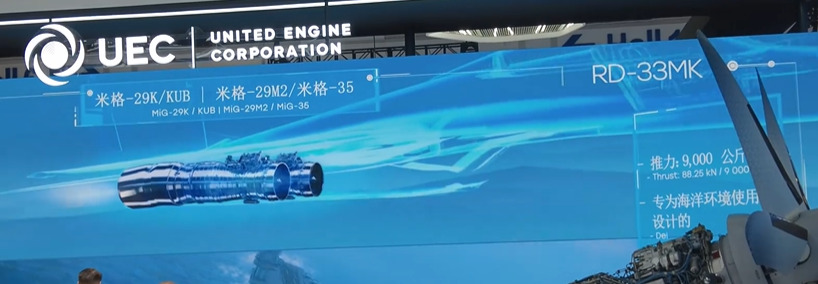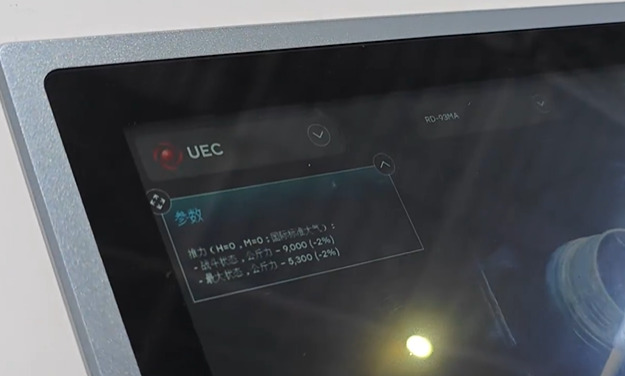The F-22 engines are a derivative of the F-15A engines as well, would you say it is the same engine?
that i dont think that the chinese Su-35’s have a different engine compared to the russian ones
The F-22 engines are a derivative of the F-15A engines as well, would you say it is the same engine?
that i dont think that the chinese Su-35’s have a different engine compared to the russian ones
well idk anything about the the f-119. However I do know that the al-41 was actually based off the al-31 and shares like 20% parts commonality or something. The first actual clean sheet design for a russian engine was the izd 30/al51
20% parts commonality isnt that much and those 20% might be auxilary stuff like oil coolers
i dont really see it be any other way with the al-41 hovaing a bigger diameter than the al-31
On my ever continuing hunt for J-16 cockpit bits I found a “clear” image of the little triangular MFD on the right side

Anyone more familiar with MFD pages and such able to identify what information they have on it?
Seems to have two dials at the top so I’d assume it’s engine telemetry of some sort
I’ve pretty much pieced together what the MFD’s and general layout is but I’ve never found any images of the throttle or buttons/panels on the sides
of course not, real, and it’s really a bad movie with bad air fight and bad CG/model
what I saw is “current J-15T wont use WS-10, because the test is not done yet, but in the future it will switch to WS-10”
Salyut/Saturn‘s 2024 Annual financial report mentioned they delivered several AL-31FN series 5, could be for old J-10B/C’s replace engine
they are not the only source. Though it’s reasonable, but other source also mentioned WS-10 navy is still progressing, maybe it will be just a backup, or maybe used only a few like J-10C late.
Backup is reasonable. Unlike the J-10C deployed at land bases, even if a few subsequent batches adopt the WS-10, it would require supporting at least three different engine types on carriers—an unacceptable and unnecessary logistical burden. Considering the total demand for J-15Ts across the three existing carriers is only around 50 airframes, while over 70 units have already been produced, it’s safe to say the likelihood of future engine replacement is highly unlikely.
can be used centralized, could be for the forth carrier.
Based on current deployments, assuming a 1:1 ratio of J-15Ts to J-35s,the Liaoning would carry 12 J-15Ts plus 12 J-35s, the Shandong maintains the same configuration, and the Fujian would carry 24 of each—requiring only 48 J-15Ts total across all three carriers. With over 100 legacy J-15s and more than 70 new J-15Ts already produced, these numbers are fully sufficient for a fourth carrier. On the other hand, concentrating WS-10-powered J-15Ts on a single vessel would create discrepancies in control response for pilots transitioning between flight school and actual deployment, necessitating additional training costs.
The promotional video indicates the RD-33MK produces 9,000 kgf thrust, with booth data confirming this is measured at static conditions—sea level, zero airspeed, under standard atmosphere. Assuming all specifications in this video follow the same standard, the 14,000 kgf thrust figure would likewise represent static thrust.


Bit strange considering earlier models already surpassed this thrust. RD93 as well. Might be different conditions but still.
RD93 is 8300
hard to say, back to my argue with other here long time ago about the thrust of WS-10 and AL-31, their static thrust standard is actually simulated environment of 0.6 mach speed
Hey guys, does the Chinese not carry any iir air to ground missiles on their flankers?
Did a cursory google search and it seems like the j-16 doesn’t carry any agm 65d/kh-38mt equivalents, seems like they only get spice equivalents
not so SPICE, KD-88 is a turbo engine agm.
and there are very few information about Chinese anti-surface ammunition
Maybe this can be considered static bench thrust, which closely approximates thrust at Mach 0.6 after accounting for total pressure losses caused by the intake system.
The primary air-to-ground missile is the KD-88, supplemented by the stealth glide dispenser AKF-98A, while the core anti-ship missile is the subsonic YJ-83K, and the supersonic YJ-91 with its dual anti-ship and anti-radiation variants.
It depends cause stuff like RD33 have like 8 tonnes of thrust, some even claim up to 9-10t on various posters but realistically its more like 6-7.